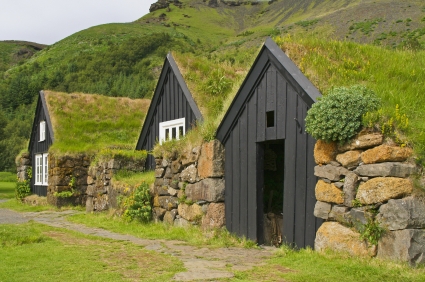When planning to design or rebuild a roof, choices can be made between metal, asphalt, concrete, and other popular materials. There is one type of material that does not often cross people’s minds and that is “green” roofing. This type of material is probably not thought of because this type of system is not popular in the United States. Just because it is not popular does not mean that it has nothing to offer to residences in the United States.
other popular materials. There is one type of material that does not often cross people’s minds and that is “green” roofing. This type of material is probably not thought of because this type of system is not popular in the United States. Just because it is not popular does not mean that it has nothing to offer to residences in the United States.
Understanding This Eco-Friendly System
Unlike conventional designs that make use of wood, metal, cement, or rocks, a green roof is a unique system that makes use of soil and live vegetation. In a nut shell, a thin layer of soil is layered above the underlayment of the structure and plant life is encouraged to grow in the soil.
This system is not new and has actually been around for centuries. Scandinavian houses made use of sod as a crude means of insulating their homes. The popularity of this design actually rose again in the 1960’s in Europe; however, it was only short-lived as other classical designs led to its decline.
Today this design has started to regain its popularity. The resurgence is not because of its aesthetic benefits but rather due to growing environmental consciousness. More and more people understand the benefits of “going green,” and how it helps the environment.
Benefits
- Effective Heat and Cold Insulation – Insulation from extreme temperatures is one of the benefits of having a green housetop. During the summer, the vegetation absorbs much of the sun’s rays instead of radiating it into the living space. During the winter, the soil absorbs the cold temperatures, thus reducing the heating requirements indoors and improving energy efficiency.
- Cleans the Air – It is a known fact that plants absorb carbon dioxide and release oxygen. One of the advantages of having the entire top of the building covered with vegetation is being able to inhale cleaner air. This is particularly beneficial in cities that are heavily polluted.
- Reduces Run-off – Today, cities are surrounded by concrete. This can create problems on rainy days. The run-off from the rain is supposed to be absorbed by the soil, and gradually evaporate when the sun heats up; however, because concrete absorbs water very poorly, this often leads to flooding. Installing a green system will help to reduce run off by absorbing the water into the soil layer and slowly releasing it, thereby reducing flooding.
- Habitat for Bio-Diversity – The small vegetation can also serve as a temporary habitat for various life forms, such as birds and bees. In this day and age, where trees have been replaced by street lights and buildings, a green roof can help sustain bio-diversity.
How to Build One
Upgrading to a green roof has so many environmental benefits; however, building one is not as simple as installing shingles. There are certain structural requirements that must be met before the system can be implemented.
First of all, the structure has to either be low sloping or flat. This is important so that the soil layer does not erode during heavy rain. The existing support structure should also be solid enough to support the combined weight of the plant life, soil, and the run-off. A professional contractor can assess the condition of the existing roof to determine whether it is suitable for this type of system.
A green roof is one of the best types of roofing systems. It offers so many environmental and practical benefits that are not found with conventional structures. The information provided above offers a brief introduction regarding green roofs, their benefits, and the structural requirements to implement them. Hopefully green roofs can be appreciated for something other than their brilliant color!
Are you looking for a roof Houston contractor to help you with your roofing needs? Schulte Roofing of Navasota provides roofing services to the greater Houston area and can help Houston customers with all of their roofing needs!
